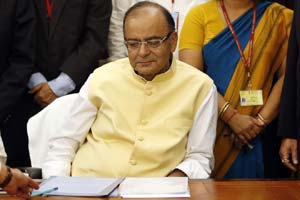As finance minister Arun Jaitley presents his first full-year budget today, he will have to do a tightrope walk in balancing public expenditure, subsidies and revenue generation. Even though the finance ministry is pushing for an increase in public expenditure for raising growth in the next fiscal, it will have to ensure higher tax collection and savings. Disbursement of subsidies and entitlements through direct benefit transfer (DBT) and judicious allocation of resources will help him in doing this.
With the fiscal deficit touching 100.2% of the full-year projection in the April-December period, the government is set for a larger expenditure compression in FY15. In FY16 too, if the roadmap fixed for the fiscal deficit is to be followed, the finance minister will have to do a fine balancing act. As per the FRBM goals, the fiscal deficit target has to be reduced to 3.6% in FY16 and 3% in FY17.
The Budget is expected to draw a strategy for curtailing subsidies and boost investment, both in the public and private sectors. The provisional account of FY14 shows that the expenditure on major subsidies stands at R2,45,452 crore—food at R92,000, petroleum at R85,480 crore and fertiliser at R67,972 crore. In FY15, major subsidies are budgeted at R2,51,397 crore. As a percentage of GDP, total subsidies were at 2.3% in FY14, and are budgeted at 2% in FY15.
In the last few years, the finance ministry has been projecting higher tax revenue increases in the budget to keep the fiscal deficit target low. This puts unnecessary pressure on the tax department. So, the tax mop-up growth target for FY16 will be keenly watched.



